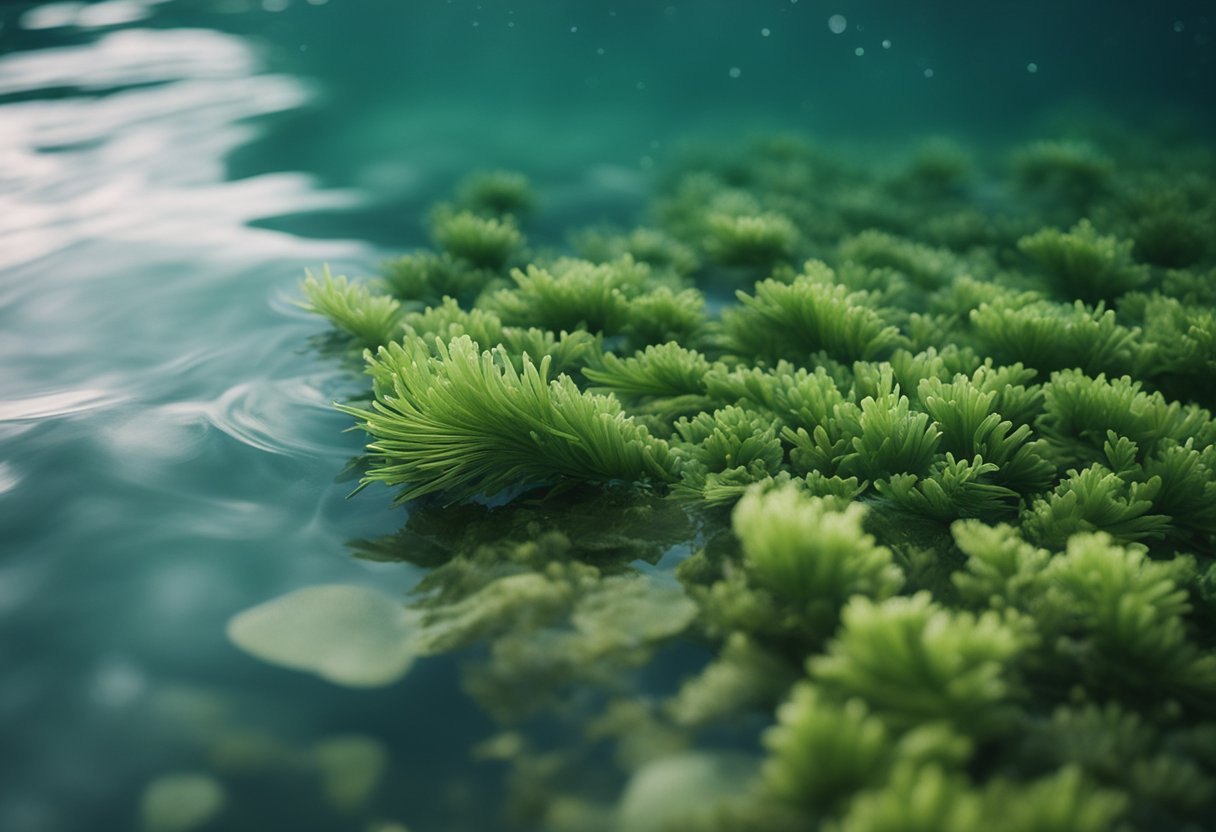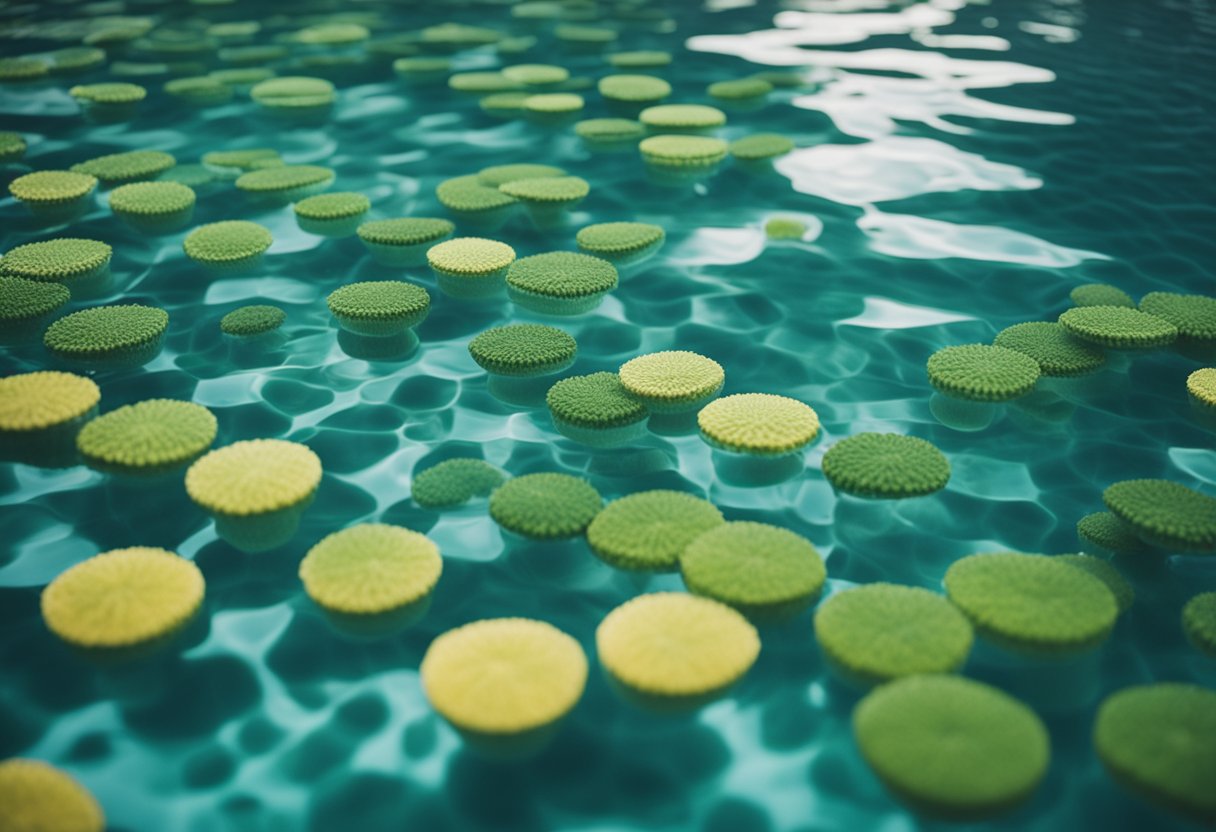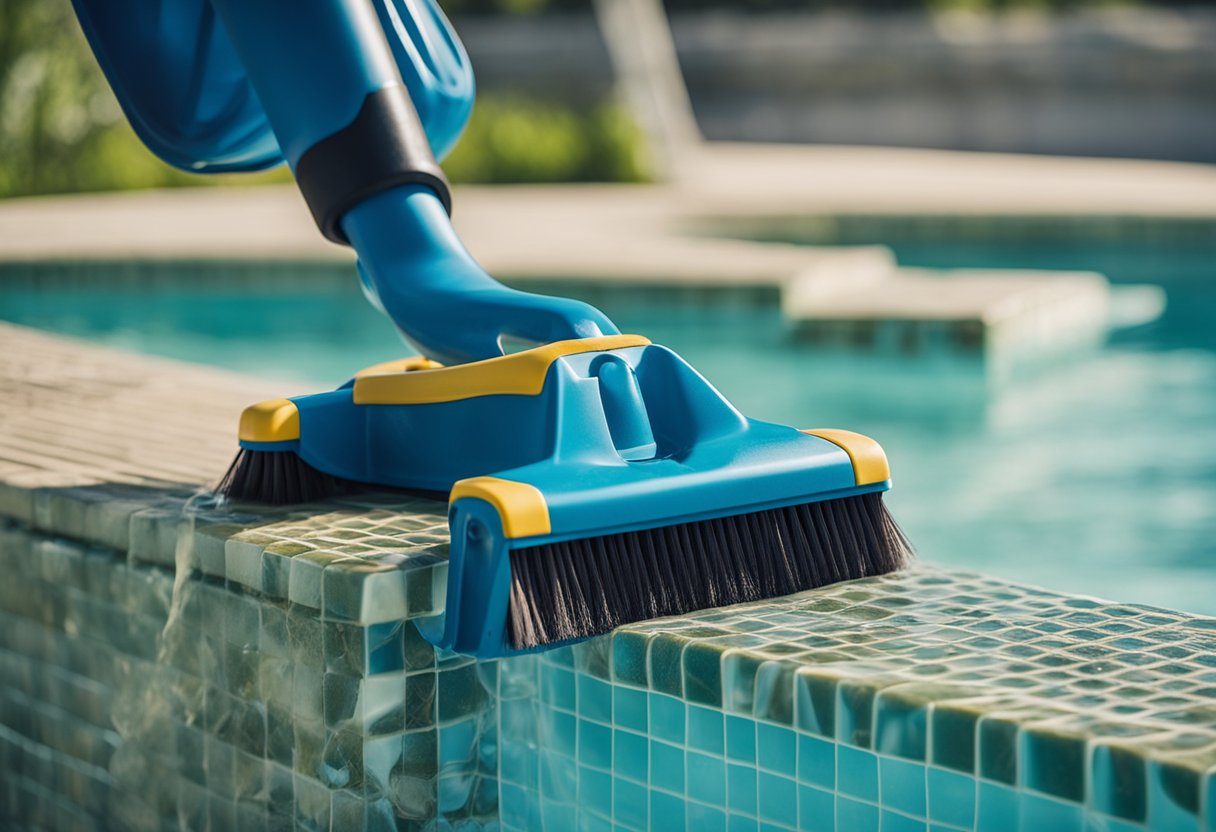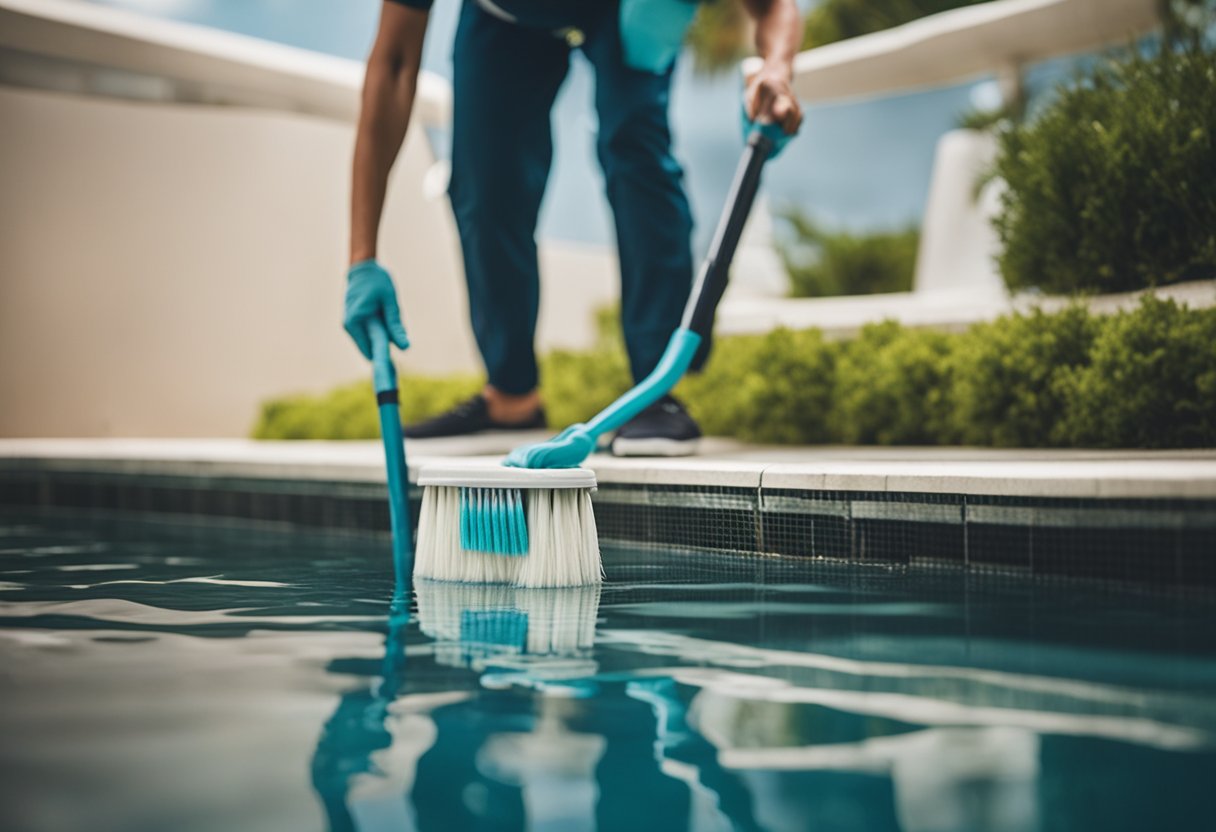Cleaning pool steps underwater can be a daunting task, but it’s an essential part of maintaining a clean and healthy swimming pool. If you neglect to clean the steps regularly, they can become slippery and dangerous, as well as unsightly. In this article, I will share my own knowledge and research to provide a step-by-step guide on how to clean pool steps underwater.
To begin, it’s important to understand the different types of stains that can accumulate on pool steps. Mineral stains are common and caused by calcium in the water, while organic stains can come from leaves, mulch, or algae blooms. Metal stains can also occur and are caused by the presence of metals in the water. Identifying the type of stain is crucial because it determines the appropriate cleaning method.
Once you’ve identified the type of stain, you’ll need to gather the essential pool cleaning tools. These include a pool brush or pool skimmer, a pool vacuum cleaner, a bucket, and pool cleaning solution. With these tools in hand, you’ll be ready to start the step-by-step cleaning process.
Understanding Pool Steps
As a pool owner, it is essential to understand the different types of pool steps and how to maintain them. Pool steps come in various materials such as vinyl, fiberglass, and concrete. Fiberglass pool steps are the most common and are durable and easy to maintain. Colored pool steps are also available in the market, and they add a beautiful touch to the pool.
Pool steps can become discolored over time due to various reasons such as oxidation and algae growth. If the pool steps are not regularly cleaned, they can become slippery and pose a safety hazard. It is essential to clean pool steps regularly to prevent discoloration, algae growth, and other issues.
Vinyl pool steps require gentle cleaning, and the use of abrasive materials should be avoided. Fiberglass pool steps are more durable and can withstand more rigorous cleaning. Concrete pool steps are the most challenging to clean and require specialized cleaning solutions to prevent damage to the surface.
Regular cleaning of pool steps is essential to maintain the pool’s overall hygiene and prevent the growth of harmful bacteria. A buildup of dirt and debris on the pool steps can cause the water to become cloudy and affect the pool’s chemical balance.
In summary, understanding the different types of pool steps and their maintenance requirements is crucial for pool owners. Regular cleaning and maintenance of pool steps will ensure that they remain in good condition and prevent any safety hazards.
Identifying Common Types of Stains
https://www.youtube.com/watch?v=D_X6c2hcafA&embed=true
As a pool owner, you may have noticed unsightly stains on your pool steps that make your pool look dirty and uninviting. Identifying the type of stain is essential to know how to clean it effectively. Here are some common types of stains you may encounter:
Organic Stains
Organic stains are caused by organic matter such as leaves, seeds, and algae that settle on your pool steps. These stains are usually brown or green and can be removed using a pool brush or skimmer. Regularly cleaning your pool steps can prevent organic stains from forming.
Mineral Stains
Mineral stains are caused by minerals such as iron and copper that can be found in your pool water. These stains can be identified by their brown, gray, or blue-green color. To remove mineral stains, you can use a stain remover designed for your pool type. Maintaining the proper pH level of your pool water can prevent mineral stains from forming.
Animal Stains
Animal stains are caused by animals such as birds and squirrels that use your pool as a drinking source. These stains can be identified by their yellow or brown color and can be removed using a pool brush or skimmer. To prevent animal stains, you can use a pool cover when your pool is not in use.
Metal Stains
Metal stains are caused by metals such as copper and iron that can be found in your pool water. These stains can be identified by their green or blue color and can be removed using a stain remover designed for your pool type. Maintaining the proper pH level of your pool water can prevent metal stains from forming.
Stubborn Stains
Stubborn stains are caused by a combination of factors such as minerals, organic matter, and algae that settle on your pool steps. These stains can be difficult to remove and may require a combination of cleaning methods such as using a pool brush, skimmer, and stain remover. Regularly cleaning your pool steps can prevent stubborn stains from forming.
In conclusion, identifying the type of stain on your pool steps is essential to know how to clean it effectively. Regularly cleaning your pool steps and maintaining the proper pH level of your pool water can prevent stains from forming.
Essential Pool Cleaning Tools
As a pool owner, having the right tools to clean your pool is essential. Keeping your pool clean can help prevent the growth of algae and other bacteria, which can be harmful to your health. Here are some of the essential pool cleaning tools that I recommend:
Pool Vacuum
A pool vacuum is a powerful tool that can help you clean your pool quickly and efficiently. It is designed to suck up dirt, debris, and other particles that may be lurking in your pool. There are different types of pool vacuums available, such as manual and automatic pool vacuums. Manual pool vacuums require you to move them around the pool manually, while automatic pool vacuums move around the pool on their own.
Pool Brush
A pool brush is another essential tool that you should have in your pool cleaning kit. It is used to scrub the sides and bottom of your pool to remove any dirt, debris, or algae that may be growing there. There are different types of pool brushes available, such as PVC pipe brushes, sponge cleaning brushes, and scrub brushes. PVC pipe brushes are great for cleaning hard-to-reach areas, while sponge cleaning brushes are gentle on your pool’s surface.
Pool Skimmer
A pool skimmer is a tool that is used to remove leaves, bugs, and other debris from the surface of your pool. It is designed to be used with a telescopic pole, which allows you to reach the far corners of your pool. There are different types of pool skimmers available, such as manual and automatic pool skimmers. Manual pool skimmers require you to move them around the pool manually, while automatic pool skimmers move around the pool on their own.
Pumice Stone
A pumice stone is a natural cleaning tool that can be used to remove stubborn stains from your pool’s surface. It is made from volcanic rock and is gentle on your pool’s surface. A pumice stone is great for removing mineral stains and other stubborn stains that may be difficult to remove with other cleaning tools.
Bucket
A bucket is an essential tool that you should have in your pool cleaning kit. It is used to mix pool cleaning solutions and to carry cleaning tools around the pool. When using a bucket, it is important to rinse it out thoroughly after each use to prevent the growth of bacteria.
Overall, having the right pool cleaning tools can make your life as a pool owner much easier. By investing in these essential tools, you can keep your pool clean and healthy all year round.
Step-by-Step Guide to Clean Pool Steps
https://www.youtube.com/watch?v=iodM4rS6FMw&embed=true
Cleaning pool steps underwater can be a challenging task, but with the right preparation and tools, it can be done efficiently. In this section, I will provide a step-by-step guide on how to clean pool steps underwater.
Preparation
Before you start cleaning the pool steps, make sure that you have the necessary equipment and safety gear. Put on your goggles and gloves to protect your eyes and skin from harsh chemicals. You will need a bucket, a cleaning brush, a scrub brush, a towel, and a cleaning solution. You can use a commercial cleaning solution or make your own by mixing bleach and water.
Scrubbing and Rinsing
Start by scrubbing the pool steps with a cleaning brush to remove any dirt, algae, or calcium deposits. Use a scrub brush for stubborn stains. Rinse the steps with a hose to remove any loose debris. If you have a magic eraser, you can use it to remove any scuff marks or stains.
Dealing with Stubborn Stains
If you have stubborn stains on your pool steps, you can use a descaler product or a citric acid solution to remove them. You can also use vitamin C tablets to remove stains caused by metal or calcium deposits. Crush the tablets and sprinkle them on the stains, then let them sit for a few minutes before scrubbing them off.
Final Rinse and Inspection
After you have cleaned the pool steps, rinse them thoroughly with a hose to remove any cleaning solution or residue. Inspect the steps to make sure that they are clean and free of stains. If you notice any remaining stains, you can use a pool shock or an acid treatment to remove them.
In conclusion, cleaning pool steps underwater requires proper preparation, the right equipment, and safety gear. By following this step-by-step guide, you can keep your pool steps clean and free of stains.
Maintaining Water Chemistry
https://www.youtube.com/watch?v=91KMqduxwx4&embed=true
Maintaining proper water chemistry is crucial to ensuring clear and safe swimming pool water. The three main factors to consider when balancing water chemistry are pH, alkalinity, and chlorine levels.
The pH level of pool water should be between 7.2 and 7.8. If the pH is too low, the water can become acidic and cause skin and eye irritation. On the other hand, if the pH is too high, the water can become basic and cause scale buildup on pool surfaces. To adjust pH levels, I can add a pH increaser or decreaser chemical to the water.
Alkalinity is another important factor to consider when balancing water chemistry. Alkalinity levels should be between 80 and 120 ppm (parts per million). If the alkalinity is too low, the pH can fluctuate rapidly and cause damage to pool equipment. If the alkalinity is too high, it can cause cloudy water and make it difficult to maintain proper chemical balance. To adjust alkalinity levels, I can add an alkalinity increaser or decreaser chemical to the water.
Chlorine is essential for killing bacteria and keeping the water clear. Chlorine levels should be between 1 and 3 ppm. If the chlorine levels are too low, bacteria and algae can grow in the water and cause algae blooms. If the chlorine levels are too high, it can cause skin and eye irritation. To adjust chlorine levels, I can add chlorine granules or shock the pool with a high concentration of chlorine.
Other factors to consider when balancing water chemistry include the presence of metals, leaves, worms, and other debris in the water. High levels of metals such as copper and cobalt can cause staining on pool surfaces. Leaves and debris can cause the water to become cloudy and reduce chlorine effectiveness. Ascorbic acid can be used to remove metal stains, and a sequestering agent can be used to prevent metal buildup.
In addition to balancing pH, alkalinity, and chlorine levels, I can also use pool enzymes and algaecides to prevent the growth of bacteria and algae. Shocking the pool with a high concentration of chlorine can also help to clear the water and prevent algae blooms. Regularly testing the water and adjusting chemical levels as needed is crucial for maintaining proper water chemistry and ensuring clear and safe swimming pool water.
Preventing Future Stains
Maintaining a sparkling clean pool with crystal clear water is not only aesthetically pleasing but also essential for your safety. Dirty pool steps can be slippery and dangerous, so it’s crucial to keep them clean. Here are some tips to prevent future stains on your pool steps.
Use Baking Soda
Baking soda is a natural and safe way to clean pool steps. It’s an excellent alternative to harsh chemicals that can damage your pool ladder and filter. Mix baking soda with water to create a paste, and apply it to your pool steps. Scrub the steps with a soft brush and rinse with water. Baking soda is effective in removing grime and residue from pool steps.
Clean Corners and Edges
The corners and edges of your pool steps are prone to collecting debris and dirt. Use a soft brush to clean the corners and edges thoroughly. Make sure to remove any mulch or leaves that may have accumulated in these areas. Regular cleaning of the corners and edges will prevent future stains.
Maintain Proper Water Chemistry
Maintaining proper water chemistry is essential to prevent stains on your pool steps. High levels of metals such as iron, magnesium, and cobalt can cause stains on your pool steps. Regularly check your pool’s pH levels and adjust them as needed. A pH level of 7.4-7.6 is ideal for preventing stains on pool steps.
Refill Your Pool
If your pool water has high levels of metals, draining and refilling your pool may be necessary. This can be expensive and time-consuming, but it’s the most effective way to prevent future stains on your pool steps. Alternatively, you can use a metal sequestrant to prevent metals from staining your pool steps.
By following these tips, you can prevent future stains on your pool steps and enjoy a clean and safe swimming experience. Regular pool maintenance is essential to ensure the appearance and enjoyment of your pool.
Frequently Asked Questions
https://www.youtube.com/watch?v=FGyMIl1ktD4&embed=true
What is the best method to clean pool steps under water?
There are several methods to clean pool steps under water, and the best one depends on the type of stain and the material of the steps. Some effective methods include using a pool brush or pool skimmer, a pool vacuum cleaner, or vitamin C tablets (ascorbic acid). It is important to follow the instructions carefully and avoid using abrasive materials that can damage the steps or the pool.
How can I prevent my pool steps from turning yellow or orange?
To prevent pool steps from turning yellow or orange, it is important to maintain the proper pH level of the water and keep the pool clean. Hard water (high in calcium) can also cause mineral staining, so using a water softener or filling the pool with soft water can help prevent discoloration. Regularly cleaning the pool steps and avoiding the use of harsh chemicals can also help prevent staining.
Is there a specific product that works best for cleaning pool steps?
There are several products that can be used to clean pool steps, including pool cleaning solutions, ascorbic acid (vitamin C) tablets, and specialized pool brushes or skimmers. It is important to choose a product that is safe for the material of the steps and follow the instructions carefully.
Can pool steps be damaged during the cleaning process?
Yes, pool steps can be damaged during the cleaning process if abrasive materials or harsh chemicals are used. It is important to use gentle cleaning methods and avoid scrubbing too hard or using abrasive materials that can scratch or damage the steps. It is also important to avoid using chemicals that can damage the pool or harm swimmers.
Are there any safety precautions I should take when cleaning pool steps under water?
Yes, there are several safety precautions to take when cleaning pool steps under water. It is important to wear appropriate safety gear, including a swimsuit, goggles, and gloves to protect your skin from the harsh chemicals. It is also important to avoid inhaling any fumes or ingesting any chemicals, and to avoid contact with eyes and mouth. It is also important to follow the instructions carefully and avoid using too much product or applying too much pressure.
Is it necessary to drain the pool in order to clean the steps?
No, it is not necessary to drain the pool in order to clean the steps. There are several methods that can be used to clean pool steps under water, including using a pool brush or skimmer, a pool vacuum cleaner, or vitamin C tablets. These methods can be used without draining the pool, which can save time and money.

Hi, I’m Sal Muller of Tooltrip.com. My DIY experience led me to understand essential power tools for home projects. Tooltrip.com guides enthusiasts and professionals in choosing right tools for any job. I provide concise top tool reviews for easier, efficient DIY.





